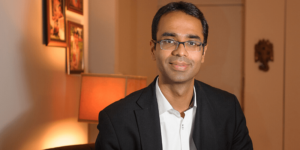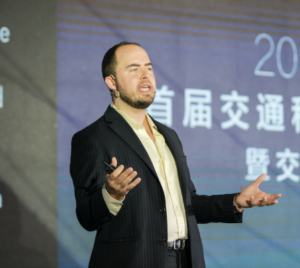India’s agriculture sector contributes 58 percent of employment for the country’s population, but the segment has a lot of information asymmetry.
Sure that technology could remove this asymmetry, Tauseef Khan and Nishant Mahatre, batchmates at IIT-Kharagpur and IIM-Ahmedabad, launched the Gramophone app in 2016. The app, which has mapped over 2.5 million acres of agricultural land, helps farmers get personalised agri advice on crops, soil, weather, etc, and functions as a one-stop solution to achieve better crop yields.
The duo has worked with agri-business companies, agritech-focused venture capital funds, and in agritech startups building farm management solutions.
What does the app do now?
Tauseef says a farmer’s success depends on three key elements:
- Agronomy intelligence: Required to manage the crops, from land preparation to harvest. This broadly involves nutrition management, pest and disease management, water management and intercultural operations. This gives the right diagnosis and builds personalised solutions for farmers.
- Access to inputs: Based on crop needs across the cropping cycle.
- Enabling farmers to sell produce to buyers at better prices.
“Gramophone provides all these through a data-driven, full-stack technology platform that makes farming intelligent on a simple app, enabling farmers to ‘Grow More’, ‘ Save More’, and ‘Sell Better,” he says.
In the past five years, Gramophone has built all three components – Gram Salah for farm management, providing personalised agronomic intelligence; Gram Uday for providing access to agri inputs to farmers; and Gram Vyapar, which enables post-harvest market linkages by bringing traders, commission agents, and processors on the same platform.
Tauseef says they were pained by the real inefficiencies in the farming ecosystem.
“India is one of the top agri-producers of most commodities in the world, yet our farmers leave so much on the table. We have 50 percent lower productivity than most developing nations where the dynamics of agriculture are similar to India (land size and farmer literacy),” he says.
“We realised that bringing change required us to be a part of the farmer’s growth cycle, and so we built products that made farming business-oriented. This allowed concepts like marginal costs and benefits to be brought to a farmer in a very simplistic way.”
Focus on farmers
Tauseef says the farming ecosystem is a trust-based economy, and the referrals is what has contributed to their growth. The growth of the three pillars is built on Gram Sabha, a network of farmers and experts that amplifies the impact stories and increases the velocity of local innovations in reaching the masses.
Endorsement from community experts has been key for the success of concepts like farm management, which don’t have instant gratification. Gramophone has been able to onboard over five lakh farmers in two years, and a total of eight lakh farmers in the past five years.
Tauseef says their revenue has witnessed 10x growth post Series A investment, and their ARPU per year has gone up by 25 percent, with a 50 percent year-on-year increase in revenue from retained customers. They continue to see an 100 percent m-o-m growth in the Gram Vyapar Trade since launch.
The cohorts of the farmers using Gramophone’s agronomy intelligence (farm management) have improved from 36 percent in FY20 to over 60 percent in FY21 retention rate on App and have a greater wallet share of Input purchase.
The team has been able to reduce the agri-inputs cost by 1015 percent, increasing farmers’ crop yield by 30-40 percent. The overall net benefit is 50 percent or more if the practices followed for the entire crop cycle.
Looking at first principles
“Our approach is to make agriculture sustainable, which involves working on soil health and practicing integrated crop management techniques,” Tauseef says.
The team began by getting an agriculture expert to give product knowledge to farmers over a phone call. This resulted in sale of agri inputs as the expert suggested products based on the diagnosis of the problems. There was no app or web for over a year until mid-2017.
“We took a first principle approach while keeping farmers at the centre of the solutions. Our approach was to bring the knowledge/agricultural information on a central engine (later named ‘Gram Intel’). This was the building block of Gram Salah, which overlaid with a commerce layer of Gram Uday,” Tauseef says.
The team wanted to be as close as possible to the farmer and farming to build products and services. Tauseef explains that they worked 50 km away from Indore in Tehsil Depalpur to understand real aspects of farming in 2016 (when Gramophone was staretd). “Our tech team was based out of Bangalore. We worked together from Indore and Bangalore to build the products; this continues till today,” Tauseef says.
The first version of the app focused on accurate agri-advice in the form of content and listing of products for m-commerce. The team’s CTO, Ashish Singh, and a few other friends helped build the Gramophone app, Gram Intel, and a basic CRM to manage the customers.
The MVP
“Anyone with a smartphone was our target. When we started in 2016, the internet revolution, or Jio, had not come so we simply started with a missed call service. We launched our app in 2017 post wider internet adoption,” Tauseef says.
For the MVP, the team focused on two major factors:
- Building the most accurate agronomy intelligence system and offering it with easy-to-use farm management features.
- Building a recommendation engine of products and solutions based on crop life cycle.
These two factors led to wider acceptance of the product as these they made decision making easy and intelligent for farmers.
Farmers aligned with Gramophone for the entire season and witnessed higher yields along with lesser input cost. “We continued to develop the product and today it has become a full-stack platform after the addition of Gram Vyapaar,” Tauseef says.
Since farmers always lacked a service/product that made agronomy intelligence available to them with the help of technology in easy-to-understand language, Gramophone found acceptance in the target market.
“We made Gramophone accessible for farmers via multiple channels – missed call, call centre, app, Gram Uday centres, and the Gram Konnect app for the on-ground field team. This meant a farmer with a feature phone could also avail our services,” he explains.
Post Jio, internet and smartphone penetration grew exponentially, which is when the team launched its app and built it over a period of time by putting in place a continuous farmer feedback loop.
“Our field team in Madhya Pradesh works closely with farmers, takes feedback on a regular basis, and shares this with the product team at Indore HQ. Our product team aligns the feedback post thorough analysis with the company’s product roadmap and the tech team works on the same,” Tauseef says.
The team had also realised that farmers – their target audience – differed greatly from a Tier I, II, or III consumer. Their user behaviour and way of absorbing marketing communication is also different. Trust, transparency, and word of mouth are what bring them to the platform and keep them engaged for a longer time.
“As a company, we have focused on these three growth hacks, which have yielded great results. We have eight lakh+ farmers on board today. This also maintains the product feedback loop and helps us to take the product to the next level.”
The segment and future
With 160 million hectares of arable land, India is the world’s second largest agricultural market after the US, according to Bain & Company. The startup competes with the likes of Plantix, AgNext, Wolkus Technology Solutions Pvt Ltd (Fasal), Agrostar, Agri10x, and others in a rapidly growing sector.
According to NASSCOM, India has more than 450 agritech startups, which are increasingly empowering 150 million-odd farmers with data-led systems.
In 2021, Gramophone has a suite of products developed completely in-house. These include managing operations remotely via the Gram Konnect application, which is used by on-ground employees and partners (village representatives).
Gram Konnect not only helps partners manage farms remotely but also provides income to village representatives for delivering goods at the last mile, enables cash management, and helps the team to procure output from farmers and aggregators with the launch of Gram Vyapar in 2021.
Tauseef says Gramophone has laid a strong foundation for its next level of growth. The platform will cross one million farmers by Q1 FY22 and reach 2.5 million farmers by the end of the year.
“We will enhance the capabilities of Gram Intel by integrating satellite imagery into the farm management product. Soil and crop nutrition have been a key element to increase farmer productivity.
“We have the capability of giving personalised nutrition schedules based on soil tests, and are working on building a repository of soil types by partnering with research institutes to build more personalised nutrition recommendations. We have started monetising farm management and aim to convert 10 percent farmers to premium versions of Gram Salah,” Tauseef says.

![You are currently viewing [Product Roadmap] How Gramophone used tech to increase crop yields by over 30 pc for 8 lakh+ farmers](https://blog.digitalsevaa.com/wp-content/uploads/2021/05/PRM-1620125439692.png)






![Read more about the article [App Friday] This digital calendar helps sync up your family schedule, sports events, and public holidays all in one place](https://blog.digitalsevaa.com/wp-content/uploads/2022/01/Imager54n-1643289733240-300x150.jpg)

